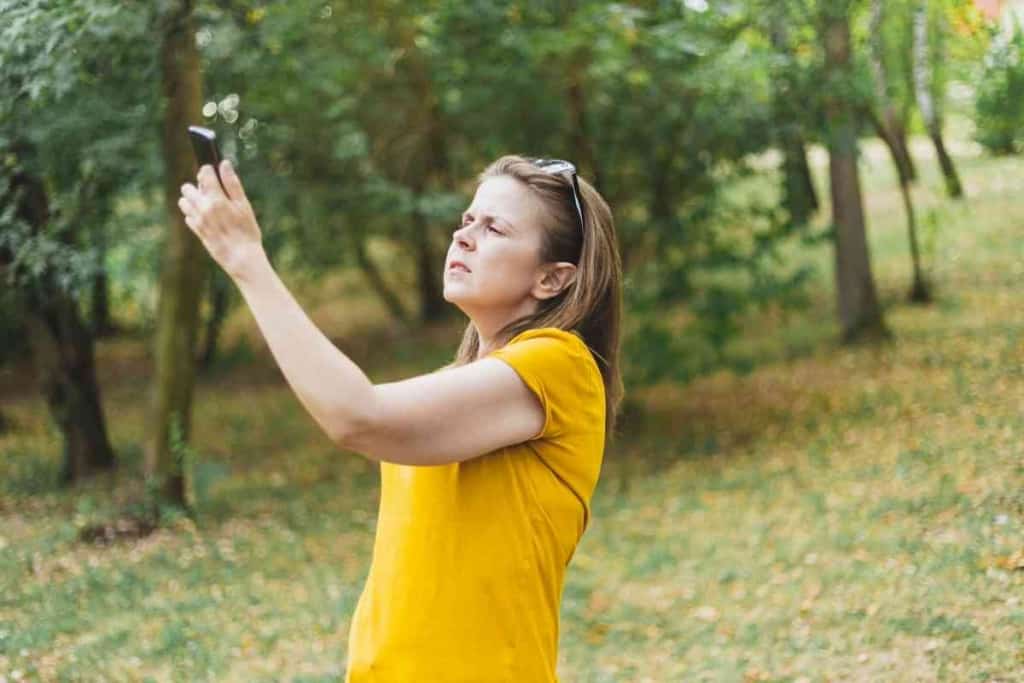iPhone Won’t Send Pictures? Solutions And Workarounds!
Most people take pictures with their iPhones and then send them to friends or post them online. However, sometimes people have trouble sending pictures from their iPhones.

Table of Contents
Why won’t my iPhone send pictures?
Your iPhone probably can’t send pictures because of a poor internet or network connection, inadequate storage space, or because you need to perform a software update. Fixing your connecting or storage issues should fix it, or you can use iMessage or Facebook messenger as a workaround.
There are a few reasons why this might happen, and we will go over some of the solutions in this blog post.
Internet Connection
When you send a picture on your iPhone, it is important to have an active internet connection. The picture may not be sent successfully if you don’t have an active internet connection.
There are two ways to ensure that you have an active internet connection when sending pictures on your iPhone.
First, you can turn on cellular data for the Camera app. To do this, go to Settings > Cellular and scroll down to the Camera app.
Second, you can connect to a Wi-Fi network. If you’re not sure how to do this, you can go to Settings > Wi-Fi and select a network from the list.
Once you’re connected to a Wi-Fi network, you should be able to send pictures on your iPhone without any problems.
The Right Network
When sending pictures on iPhone, it is important to check and see if your phone is connected to the right network.
If it is not, the pictures may not be sent correctly or at all. There are a few ways to check this. One way is to go into your phone’s settings and look at the “Cellular” or “Mobile” data. From there, you should see which network your phone is connected to. Another way to check is to go into the “Photos” app and select the album that you want to send pictures from.
After selecting the album, tap on the “SHARE” icon in the upper right-hand corner. From the menu that pops up, tap on “Mail.” If you do not see the option for “Mail,” then your phone is not connected to the correct network.
Once you have verified that your phone is connected to the right network, you can proceed with sending pictures on your iPhone without any worry.

Storage Space
Storage space is one thing to remember when sending photos on your iPhone. If you have a lot of old messages, photos, and apps taking up space, it can cause issues when sending photos.
To prevent this, delete any old messages, photos, and apps that might be taking up too much storage space. This will free up space on your iPhone so you can send photos without any issues. Keep in mind that deleting messages, photos, and apps can also help improve your iPhone’s performance.
So if you’re having trouble with your iPhone, deleting some old data may help to improve its performance.
Updating Your iOS Software
One of the benefits of owning an iPhone is that you can send photos to your friends and family instantaneously.
However, in order to do this, you need to have the latest iOS software installed on your phone. If you haven’t updated your software in a while, there’s a good chance that you’re not running the most recent version.
Luckily, it’s easy to check and see if there’s an update available. Simply go to the Settings app, then tap on General and Software Update. If an update is available, tap Download and Install. Once the update has been installed, you’ll be able to send photos right from your iPhone.
Other Fixes
Sometimes, simply resetting your device can fix the problem. If that doesn’t work, try checking that you have enough storage space on your phone. You may need to update your iOS software if you’re still running into issues. You can do this by going to Settings > General > Software Update.
Finally, if nothing else is working, reach out to Apple Support for further assistance.
How to Set Up iMessage in iPhone
Setting up iMessage on your iPhone is a simple process that only takes a few minutes to complete. First, open the Settings app and select Messages. Then, turn on the iMessage toggle switch. Next, you will need to enter your Apple ID and password.
Once you have signed in, you can start using iMessage. You can also add additional email addresses that can be used to send and receive iMessages.
To do this, go to the Settings app and select Messages > Send & Receive. Here, you can add additional email addresses that can be used with iMessage. Additionally, you can also choose which phone number and email address will be used as the “start new conversations from” default.
The Difference Between Green And Blue Messages
When it comes to messaging on your iPhone, you have the choice of sending a green or blue message. But what’s the difference between the two? Green messages are sent using your regular SMS text messaging plan, while blue messages are sent using your data plan.
This means that if you’re sending a green message, you’ll be charged by your carrier for every text message you send. If you’re sending a blue message, you won’t be charged per text – instead, you’ll be charged for the amount of data you use.
So, if you’re planning on sending a lot of messages, or if you’re sending messages to someone who doesn’t have an iPhone, blue messages may be a better option. However, if you’re only sending a few messages and you’re not worried about using data, green messages may be the way to go.
Using Facebook Messanger To Send Texts Internationally
Facebook Messenger is a popular messaging app that allows users to send text, image, and video messages to their Facebook friends. However, the app can also be used to send texts to phone numbers internationally.
To do this, simply open a conversation with a contact and tap the “add people” icon in the top right corner. From there, you can search for a contact by name or phone number.
Once you’ve found the correct contact, simply tap their name and select “send message.” You’ll then be able to type out your message and send it as a normal text. Although international rates may apply, this is a great way to stay in touch with family and friends who live outside of the country.
Blurry Images On Text
When images are captured using an iPhone’s camera, they are automatically compressed in order to save storage space.
This compression can sometimes result in lower image quality, especially if the image is then enlarged. Additionally, iOS devices use a process called “deep neural networks” to improve the quality of photos and videos.
This process can occasionally introduce artifacts that can make images appear blurry. Finally, it’s worth noting that some older iPhone models have lower-resolution cameras, which can also lead to blurred or pixelated photos.
If you’re concerned about image quality, it’s best to use a dedicated camera or photo editing app.
These apps offer more control over settings like resolution and compression, and they can help you produce higher-quality results.